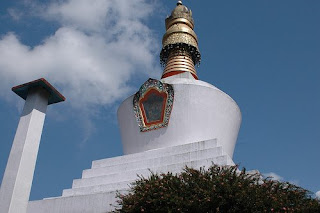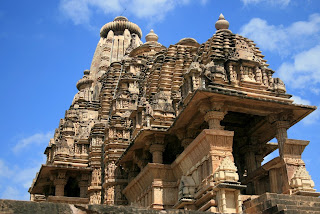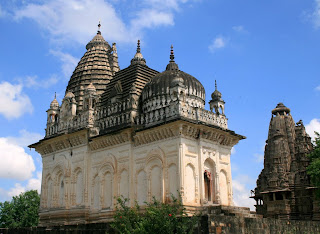For rail enthusiasts, however, Darjeeling is better known for its "Toy Train". This famous narrow gauge steam railway plies its way from Siliguri in the plains below up to Ghoom and Darjeeling in the hills and the ride transports one back to childhood days.
Getting there
If you want to get to Darjeeling by air, the closest airport is Bagdogra that is directly connected to Calcutta, Delhi and Guwahati. The nearest railhead is at New Jalpaiguri and Siliguri and both are connected to all the major places in India.
What to See
Batasia Loop
A marvelous feat of engineering, this Railway Loop provides a delightful view of the 'toy' train as it winds its way round the loop.
Darjeeling- Rangeet Valley Passenger Ropeway
This ropeway is situated at North Point which is 3 km from the town. The first passenger Ropeway to be constructed in India, this 5 km stretch connects Darjeeling and Singla Bazar, a beautiful picnic spot.
Dhirdham Temple

Situated next to the railway station, the temple architecture has been inspired by the famous Pashupatinath Temple at Kathmandu in Nepal.
Ghoom Buddhist Monastery
A typical Tibetan monastery which enshrines an image of the coming Buddha.
Tiger Hill
Tiger Hill has earned international fame for the fabulous view of the Sunrise over the great “Kanchenjunga” and the great Eastern Himalayan peaks that can be seen from here. If you are lucky and the day is clear even Mt. Everest is visible. The sunrise is simply beautiful as the golden glow of the rising Sun changes the colour of the snow capped peaks to crimson, pink and then auburn. A definite must do. Besides these attractions, don’t miss a trip to the lovely tea plantations and discover how your tea is brewed right from the planting of the tea leaf to its final destination.
In and Around
It would be a crime if you visit Darjeeling and don’t go to nearby places such as Siliguri, Kalimpong and Gangtok.
Siliguri is surrounded by hills all around and is well connected to Calcutta, Delhi, Guwahati by train. Gangtok, the capital of Sikkim, lies on a ridge overlooking the Ranipool River. Its name means 'High Hill'. The setting is spectacular with fine views of the Kanchanjunga range and distinctive flora and fauna. All these places are motorable from Darjeeling and would be well worth a visit.
The best time to visit this region is from mid-September to mid-December, although it gets pretty cold by December. However, this is the best time to get a glimpse of the mountains. March to June is also a good period if you want to escape the heat of the plains. The hills of Darjeeling are richly covered with Orchids, Chrysanthemums and other diverse flora and fauna that imbues the place with greenery and beauty. So if you want to smell the aroma of freshly minted tea, view the majestic Himalayas or spend the day sightseeing and taking in the luxuriant vegetation, then Darjeeling is the place to be in.







